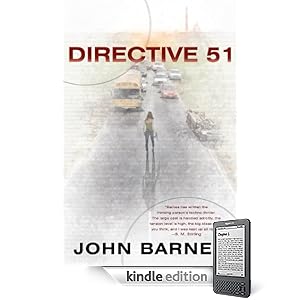
A John Barnes novel which examines the collapse of civilization, and how the US government would attempt to maintain some sort of continuity. Modern civilization falls under attack by "Daybreak" which is a collection of every group that hates modern civilization for any reason. It's not really an organized group, but more of a threat that emerges on its own. Under a combination of nanoware (which eats plastics and rubber), fusion bombs and EMPs, it doesn't take long for our intrasturcture to collapse. When the sitting US president emotionally collaspes, Directive 51 (a presidential directive which specifies continuity of government--this is somewhat at odds with the constitutional succession) is enacted. After Washington DC is destroyed by one of the fusion bombs, the National Constitutional Continuity Coordinator (NCCC) decides that he can't allow the constitutional secession to take place (there's debate over whether the US is under an attack by a governmental/terrorist enemy or whether it's just a system artifact). We end up with two "legal" governments: one, under the NCCC, controls the southeastern US (with it's center of power in Athens and Fort Benning) while the other, under the President, controls the Northeast.
In ways, this is sort of disaster porn, though Barnes at times appears to be almost too dispassionate about the destruction (most of the focus is on various government employees, particularly the Department of Future Threats, so they have as much technology and food as is available). We don't seem to be getting the resulting feudal knight setups that S. M. Stirling gave us in his "Change" series, though it's still early (and there are "Castles", at least on the West coast, which are setting up their own local governments, but no knights on horseback yet). I'm assuming the sequel (Daybreak Zero) concerns determining who (or what) is responsible for the attacks, and we get the remaining Department of Future Threats set up in Boulder as a sort of "technology bootstrapping" center.
Barnes does do something a little odd here. The book is written with scenes (specific locations and times prefaces each scene) and usually there's a change in location, but at times the location is the same, with the time only slightly after, so I'm not sure what necessitates the "scene" change.
I'll get the second book, since I'm interested enough in seeing how the story plays out.
No comments:
Post a Comment